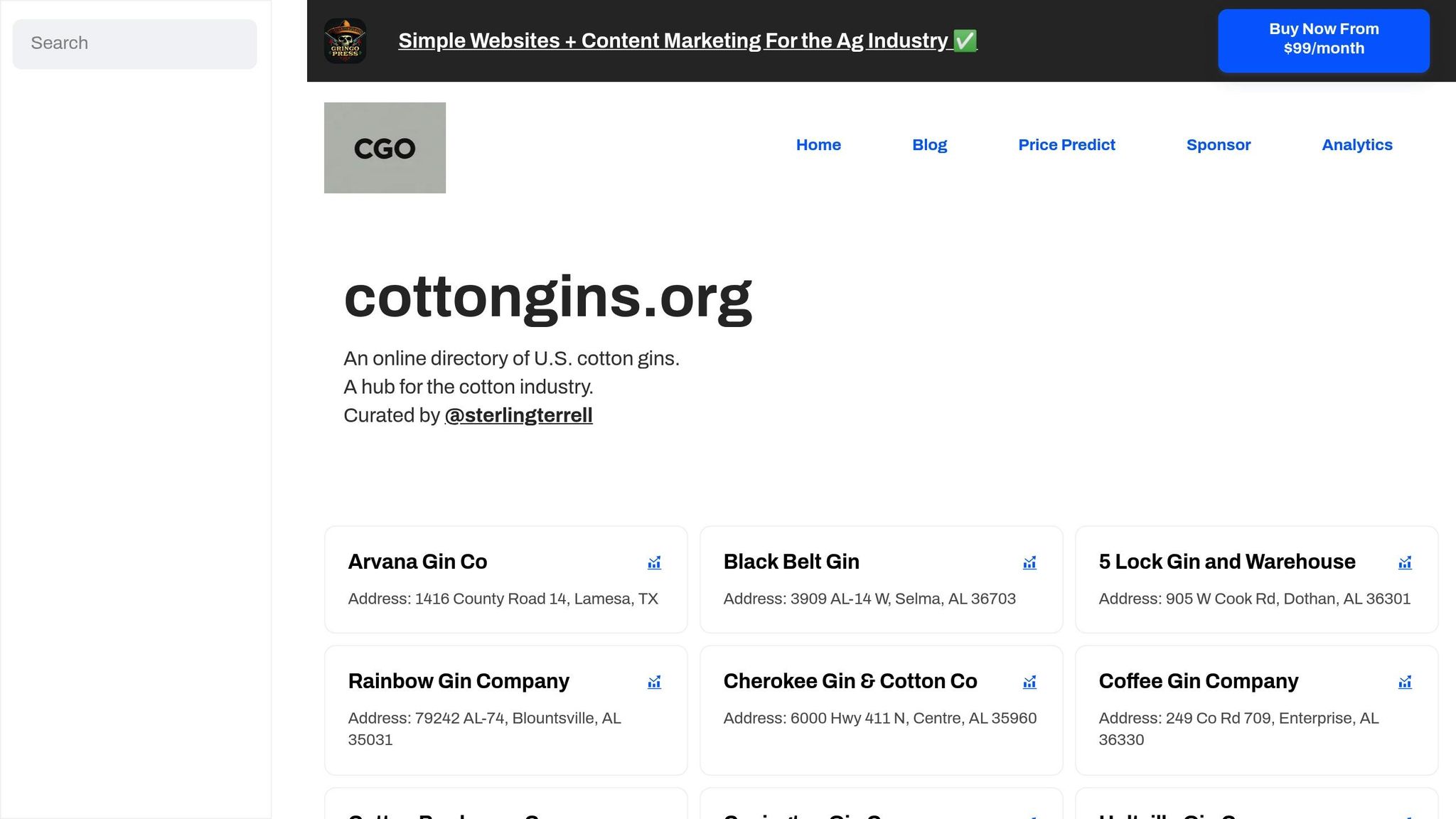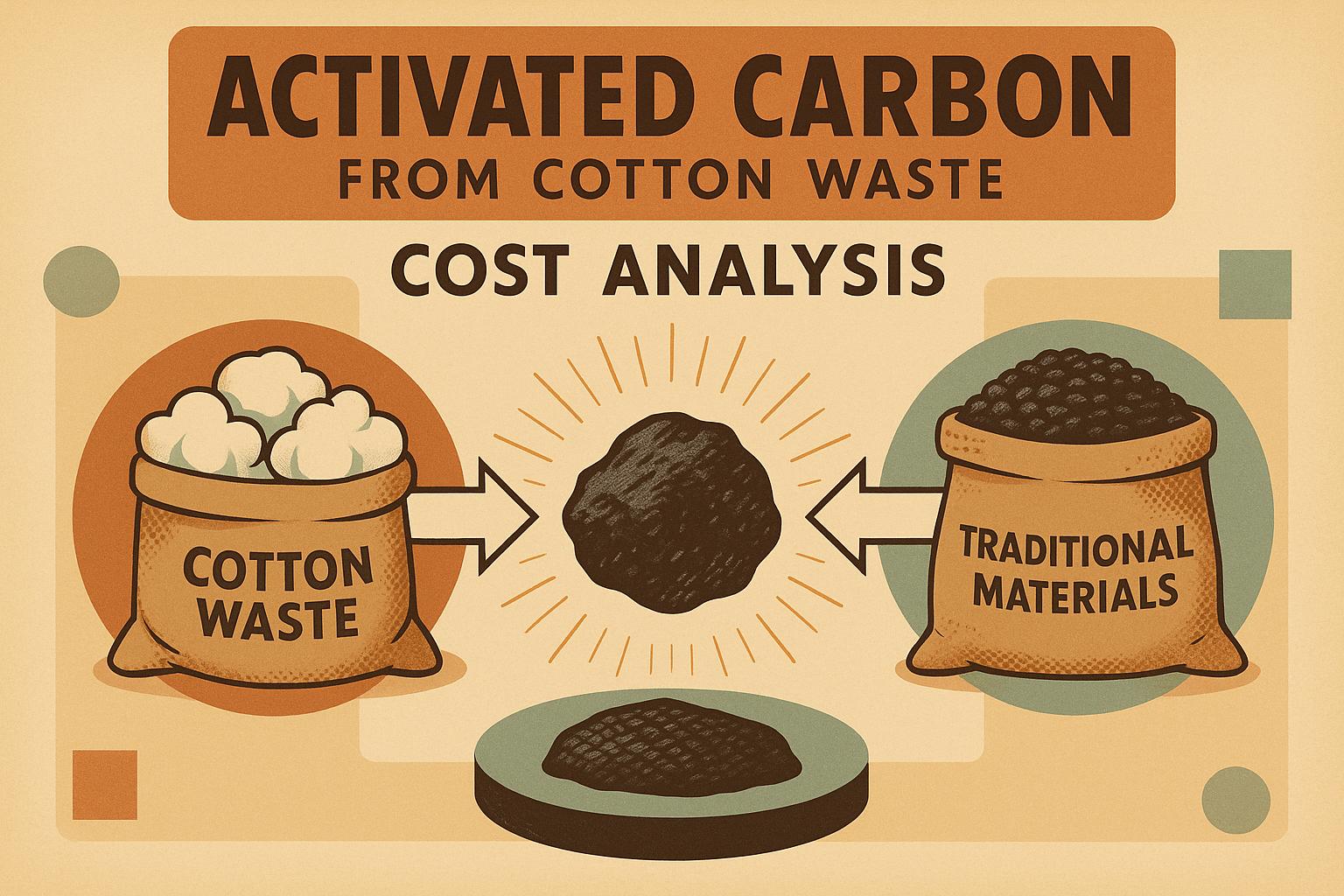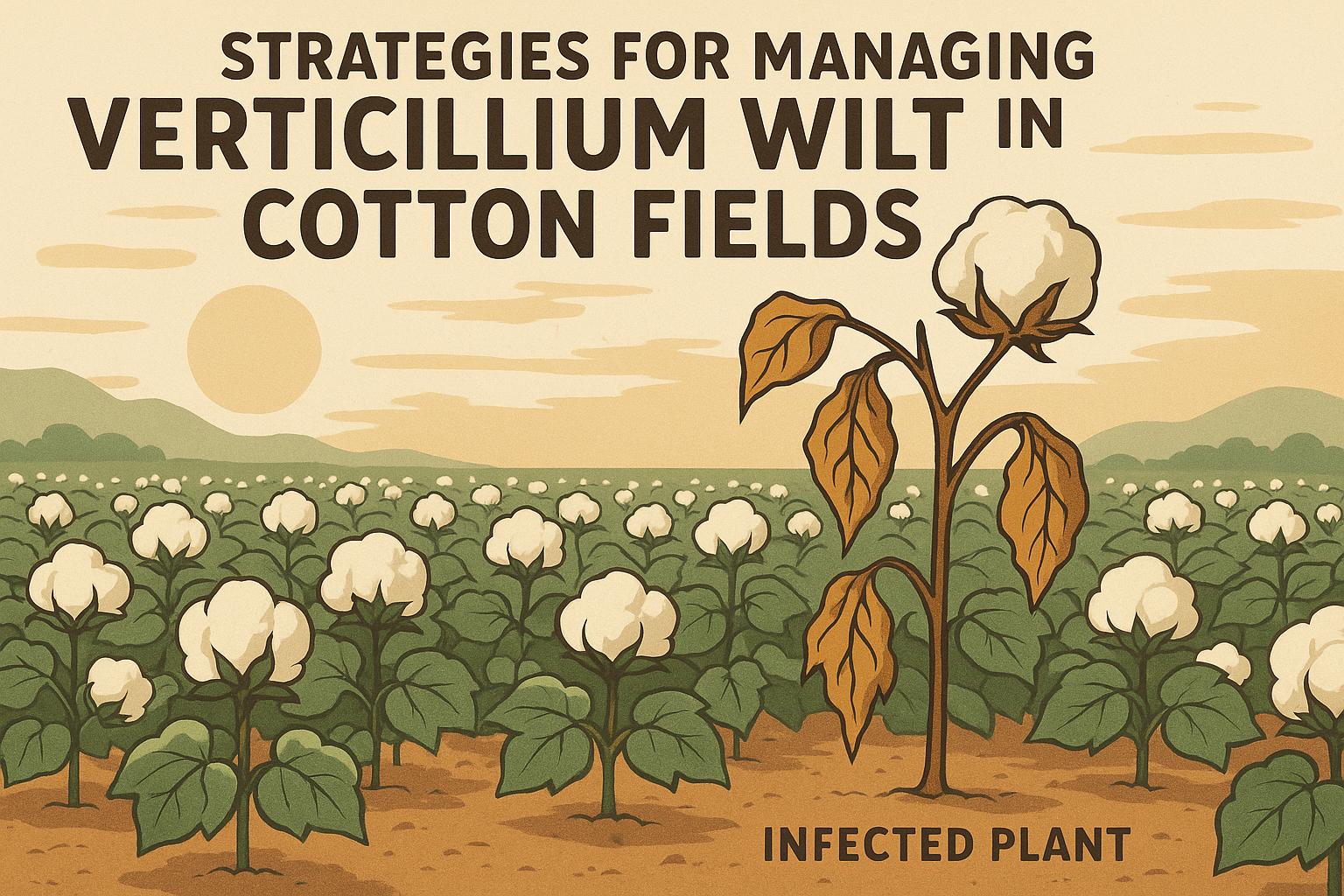Managing moisture during cotton harvesting is critical to maintaining fiber quality and maximizing profits. Cotton should be harvested with a moisture level below 12% to avoid issues like reduced fiber strength, color degradation, and contamination. Excess moisture can lead to mold, storage problems, and increased processing costs.
Key takeaways:
- Optimal Moisture: Below 12% for harvesting; 6.75%-8.25% for bale storage.
- Risks of High Moisture: Yellowing, seed coat neps, mold, and financial losses.
- Weather Impact: Rain and humidity increase moisture; dry conditions improve harvest readiness.
- Storage Tips: Monitor bale temperature; gin wet cotton immediately to prevent further damage.
- Tools: Use portable moisture meters and coordinate with local gins for efficient processing.
Cotton harvest: trash and moisture
Research Findings on Moisture Levels and Cotton Quality
Research has shown that moisture levels during harvest play a crucial role in determining cotton quality, both immediately and during storage. One study, conducted using a John Deere 7760 spindle harvester, examined seed cotton stored for 12 weeks at two different moisture levels before ginning. The results highlighted noticeable differences in fiber quality tied to moisture content, shedding light on the importance of managing moisture levels to protect cotton's properties.
Optimal Moisture Levels for Harvesting
Keeping seed cotton moisture below 12% is essential to preserving its quality. Cotton harvested with moisture levels above this threshold tends to suffer from diminished fiber quality. For instance, cotton harvested below 12% moisture achieves a better color grade (51) compared to cotton harvested above this level, which typically scores a lower grade (52) due to increased yellowing and reduced reflectance.
Weather conditions also play a big part in maintaining proper moisture levels. High humidity or heavy rainfall can increase the risk of boll rot and disease, which negatively affect fiber quality. Additionally, cotton that endures repeated rain exposure darkens significantly, lowering its grade and reducing its market value. These findings emphasize the importance of making timely harvest decisions, particularly when dealing with unpredictable weather.
Fiber Properties Changed by Moisture
Moisture levels not only affect color grading but also influence contamination and fiber characteristics. Cotton harvested above 12% moisture shows higher levels of contamination, with a leaf grade of 3 compared to a cleaner grade of 2 for cotton harvested below this threshold. This extra contamination often requires more cleaning during processing, which can lead to shorter staple lengths.
Micronaire levels, which measure fiber maturity and fineness, are also higher in cotton harvested at elevated moisture levels. Although total nep counts (tiny fiber entanglements) remain similar regardless of moisture, cotton harvested above 12% moisture tends to have larger and more frequent seed coat neps. Interestingly, fiber length and strength do not show significant differences between cotton harvested at moisture levels above or below 12%.
Storage conditions further complicate matters. When cotton is stored with high moisture content and exposed to warm temperatures, its fiber shade deteriorates. Cotton harvested at higher moisture levels tends to yellow and reflect less light, which negatively impacts its commercial grade and price. This makes moisture management during harvest a critical factor in safeguarding cotton's market value.
Weather and Harvest Timing: Controlling Moisture Problems
Weather conditions play a huge role in determining the quality and market value of a cotton harvest. For growers, timing the harvest with precision can mean the difference between premium-grade cotton and a crop that loses value due to moisture issues.
How Weather Affects Moisture Levels
Cotton soaked by rain presents multiple challenges. It’s harder to harvest and often results in lower color grades. Prolonged wet conditions can be even more damaging, affecting both the lint's color and the quality of the seeds. This can lead to yield losses caused by lint stringing, fiber weathering, and even seed germination inside the boll.
The timing of rainfall is just as critical. When boll opener applications coincide with wet weather, growers often face issues like boll rot and hardlock bolls, which can severely reduce yield.
Heavy rainfall can disrupt cotton growth and reproduction, particularly impacting the lower fruiting branches, and causing significant yield declines. Additionally, seedcotton with moisture levels above 12% faces rapid deterioration if stored for more than 24 hours. Germinated cottonseed poses its own set of problems, as it retains moisture longer and complicates harvest timing.
The National Cotton Council underscores the risks of improper storage:
"The only thing worse than wet cotton in the field is wet cotton in a module".
This stark warning highlights how quickly wet cotton can deteriorate once harvested, leading to costly issues at the gin and a reduction in overall crop value. These risks make precise harvest timing a necessity.
Best Methods for Harvest Timing
Given the challenges posed by weather, proper timing is crucial for a successful harvest. Cotton needs adequate drying before it’s ready to be picked. After a period of rain, growers should aim to give seedcotton seven to ten days of sun exposure before harvesting.
Once harvested and stored in modules, careful monitoring of moisture and temperature is key. If module temperatures rise 20°F above the surrounding air temperature or hit 120°F, immediate ginning is recommended to prevent further quality loss. Ensuring that dry seedcotton reaches the gin quickly is critical, as wet cotton stored in modules deteriorates rapidly and drives up processing costs.
Weather patterns can dramatically impact harvest timing, as seen in Texas during challenging seasons. Larry Stein, Ph.D., AgriLife Extension Horticulture Specialist, shared an example of how weather can work in a grower’s favor:
"It was as dry as I have ever seen it after that August rain. It dried out so quickly and was very dry and hot. It's no longer powder dry. People talk about getting a million-dollar rain, well this one was probably a billion-dollar rain".
For growers seeking to streamline operations and navigate regional weather challenges, resources like cottongins.org provide a directory of cotton gins across the United States. Connecting with local gin operators can help growers process their cotton efficiently, especially when weather creates tight harvest windows.
sbb-itb-0e617ca
Moisture Levels and Quality Results Comparison
Moisture levels play a crucial role in determining fiber quality, storage risks, and overall economic outcomes. Studies show that the value of cotton is closely tied to its moisture content, with results varying significantly depending on whether the cotton is harvested within the optimal moisture range or outside it. The table below outlines how different moisture levels impact key factors like fiber quality and storage.
Comparison Table: Moisture Levels and Their Effects
Here’s a breakdown of how varying moisture conditions influence cotton quality, storage, and economic factors, along with recommended actions:
| Moisture Category | Fiber Quality Impact | Storage Risks | Economic Consequences | Recommended Actions |
|---|---|---|---|---|
| Optimal Moisture | Preserves fiber strength and length | Minimal storage risks, even for longer periods | Commands top market value with standard costs | Stick to planned harvest schedule and standard storage practices |
| Elevated Moisture | Slight reduction in fiber integrity | Higher risks if processing is delayed | Decreased market value and added processing costs | Process quickly and monitor storage conditions closely |
| High Moisture | Significant fiber degradation | Rapid deterioration and seed issues | Major loss in value due to extra cleaning and processing | Delay harvest if possible; implement thorough drying before storage |
When moisture levels exceed the optimal range, fiber quality deteriorates rapidly unless processed immediately. Elevated moisture weakens fiber strength, affects color, and compromises seed quality, making storage more challenging. For instance, cotton stored with high moisture content can lead to seed damage and increased risks of spoilage, especially if temperatures within storage modules exceed safe limits relative to the surrounding environment.
Economically, elevated moisture levels translate to higher processing costs and potential market devaluation. Cotton with elevated or high moisture requires additional handling at the gin, further driving up expenses. Without proper drying or timely ginning, growers may face significant financial losses.
For those managing multiple fields, resources like cottongins.org can be a game-changer. This platform provides real-time information on local gin capacities and locations, helping growers make informed decisions when weather conditions limit the safe handling window. Having access to such tools ensures that cotton harvested at higher moisture levels can still be processed efficiently, minimizing quality and financial losses. This comparison highlights the importance of moisture management for U.S. cotton growers.
Practical Tips for U.S. Cotton Growers
Managing moisture effectively during harvest can mean the difference between a profitable yield and significant losses.
Steps to Maintain Proper Harvest Moisture
Target an 8.0% moisture level for cotton bales. This is the ideal range to preserve fiber quality and avoid processing issues. For samples sent for classification, aim for moisture content between 6.75% and 8.25% on a dry-weight basis. Research shows that maintaining these levels helps ensure fiber integrity and stability during storage.
Keep an eye on the weather. Pay close attention to forecasts, especially for dew and rainfall. Begin harvesting later in the day after dew has evaporated, and avoid harvesting right after rain. Cotton picked too early in the morning often carries excess moisture, which can lead to storage and processing problems.
Use portable moisture meters regularly. Test moisture levels in different parts of the field, as they can vary due to factors like soil conditions, drainage, and sun exposure. Areas with poor drainage or limited sunlight tend to hold onto moisture longer, so monitoring these spots is essential.
Manage overly dry cotton. If hot, windy conditions leave cotton too dry, aim to raise bale moisture to at least 6.5%. This improves both fiber quality and processing performance. While automated moisture-control technology at gins may become available in the future, for now, careful field management is key.
Coordinate with local gins. Resources like cottongins.org can help you find nearby facilities. Cotton with higher moisture levels needs immediate processing to prevent quality issues, so having access to local gins is critical, especially when weather forces you to harvest outside the ideal moisture window.
Once moisture levels are optimized, quick processing through local gins ensures the best results.
Using cottongins.org to Support Harvest Operations

Efficient processing is essential once you've reached the right moisture levels.
Find nearby gins by visiting the "Cotton Gins Near Me" section on cottongins.org. This directory covers major cotton-producing states like Alabama, Georgia, and Mississippi, providing detailed addresses for each facility.
Reduce transport time. Use the listed addresses to minimize the distance between your fields and the gin. Shorter transport times mean quicker processing and less risk of quality loss during transit.
Plan ahead with backup options. Identify multiple gins before harvest begins. This way, if your primary gin is at capacity or faces delays, you can quickly switch to another facility. Flexibility is especially important during tight harvesting windows caused by weather.
Stay updated on industry news. Subscribe to the site’s blog for updates on processing innovations and industry trends. These insights can help refine your harvest planning and moisture management strategies.
Help grow the directory. If you come across a gin not listed on the site, use the "Submit A Gin" option to add it. This keeps the resource comprehensive, benefiting all growers, especially during peak harvest times when processing capacity is stretched.
Conclusion: Main Points on Moisture Management
Managing moisture levels effectively is critical for ensuring a successful and profitable cotton harvest. Keeping moisture levels below 12% is essential to maintain fiber quality and prevent storage complications.
When cotton exceeds 12% moisture, its quality begins to decline. Higher moisture levels can significantly affect fiber color and cleanliness, leading to reduced lint prices and increased processing expenses.
Protecting harvested cotton from adverse weather is equally important. Exposure to rain or excessive moisture can cause fiber deterioration, rot, and even dangerous heating. Choosing appropriate module storage sites and using proper coverings helps avoid these costly issues, highlighting the importance of combining moisture control with weather protection strategies.
A well-rounded approach involves consistent field monitoring and strategic harvest timing. Using portable moisture meters to account for field variability, planning harvests around favorable weather, and coordinating with local gins through tools like cottongins.org can minimize delays and ensure efficient processing. These steps are vital for safeguarding your cotton from the field to the final stages of production.
The bottom line? Proper moisture management can make or break the profitability of a cotton operation. Even small changes in moisture levels can impact fiber characteristics like micronaire and nep content, directly influencing overall quality and returns. Every percentage point counts.
FAQs
Why is it important to keep cotton moisture levels below 12% during harvest, and what happens if they are too high?
Keeping cotton's moisture content below 12% at harvest is crucial for maintaining fiber quality and ensuring it can be stored properly. If moisture levels go beyond this point, the cotton becomes more susceptible to problems like mold growth, decay, and other factors that can harm its quality. On top of that, excessive moisture can drive up storage costs and even lead to spoilage, which reduces the harvest's overall value.
By keeping moisture levels in check, you safeguard the cotton fibers' quality, minimize potential storage issues, and set the stage for better results during processing. It's a simple yet vital step that benefits both growers and processors.
How do rain and humidity impact cotton harvest timing and quality?
Rain and high humidity can throw a wrench into cotton harvesting by raising the moisture content in the fibers. This creates a host of problems, like delayed harvests, mold growth, boll rot, and lower-quality fibers. Farmers are often forced to hold off until conditions dry out to protect their crop.
To achieve the best harvest, cotton should be picked when its moisture content is 12% or lower, which usually happens during dry, sunny weather. When humidity levels climb above 70%, the natural drying process slows down, causing even more delays. Timing is everything when it comes to preserving cotton's quality for storage and processing.
How can cotton growers monitor and manage moisture levels to protect harvest quality?
Maintaining the right moisture levels during harvest is crucial for keeping cotton in good condition and avoiding storage problems. One handy tool for this is the portable moisture meter, which gives quick, precise readings of cotton's moisture content. This ensures that the cotton is harvested within the ideal moisture range.
Growers can also rely on soil moisture sensors paired with remote monitoring apps to keep tabs on real-time soil conditions. These tools are especially helpful for managing irrigation and deciding the best time to harvest. By using these technologies together, farmers can make smarter choices to safeguard cotton quality and enhance storage conditions.


